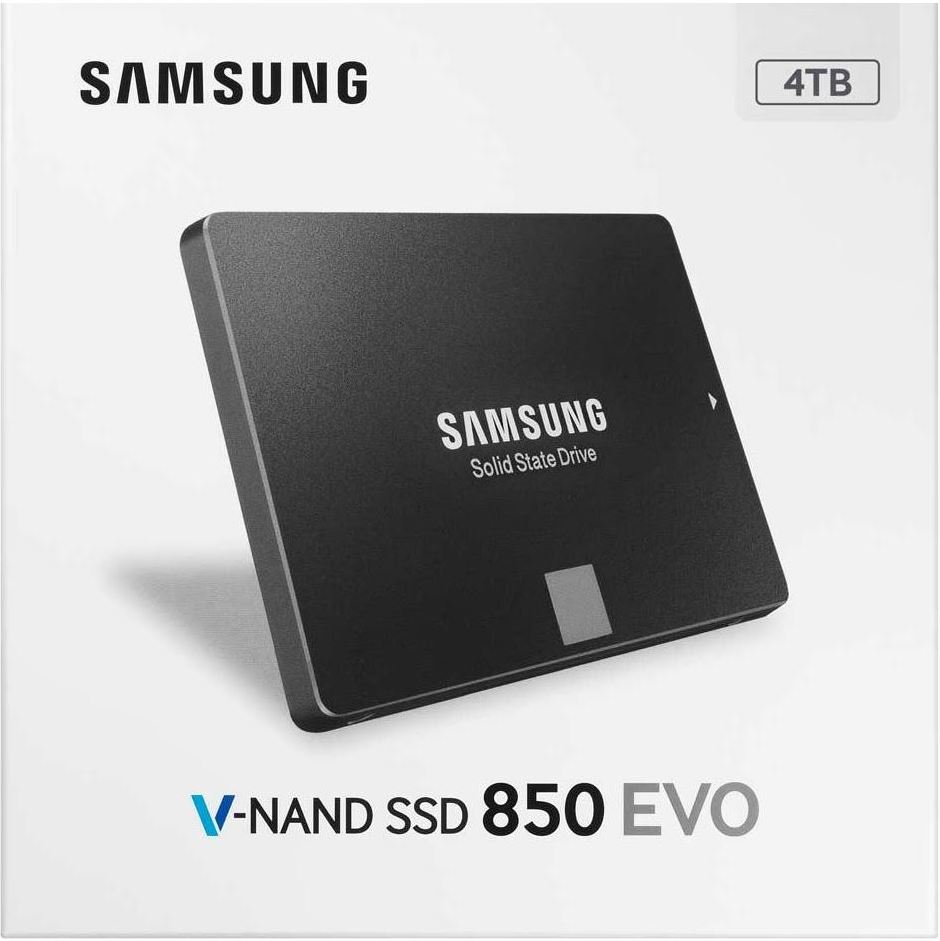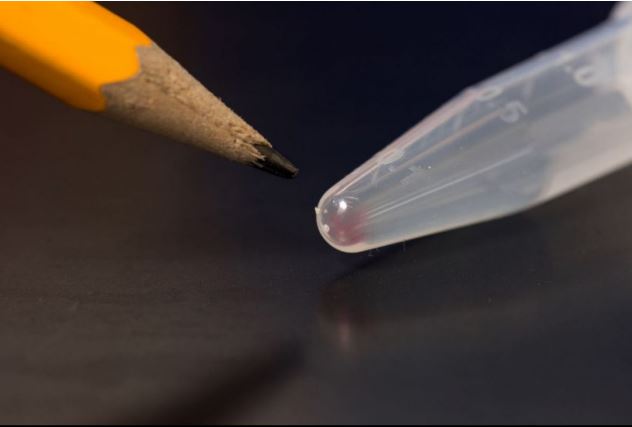The Week In Storage: DNA Storage, Hitting The Magnetic Switches, Old HDDs Learn New Tricks
The week in storage found us covering yet another memory card, but the new Samsung cards shift into high gear with the UFS interface, which allows speeds up to 530/250 MBps of sequential read/write throughput and 40,000/35,000 random read/write IOPS. For those not keeping track, that is roughly as fast as many of the value SSDs on the market.
The new speedy Samsung offerings come in capacities up to 256 GB, but don't expect them to slot into your phone anytime soon. Currently, only ultra-high-end devices support them, and it will likely be some time before it bleeds down to the mobile masses.
Micron is in dire need of a resurgence after many years of languishing on the enterprise PCIe SSD front. The new Micron 9100 Max NVMe SSD kicks things up a notch and rockets the company to the bleeding edge of performance. The relatively cheap $3,240 2.4 TB model slays larger devices that weigh in at roughly $10,000, so we can expect Micron to experience a fair bit of success with its latest SSD series.
New products are often unwittingly pre-announced by retailers that accidentally list items ahead of the release date, and the good folks at Adorama helped us out by listing the unannounced Samsung 4 TB 850 Evo on their site. This discovery touched off some additional searching, and we were able to unearth detailed specifications on Samsung's site. The new hefty SSD will come with more of the same solid performance trends we expect from modern SATA SSDs, but the real story is the price: $1,300 is relatively low for an SSD with such high capacity, but it's still high enough to place it out of reach for all but the well-heeled.
Samsung has an odd habit of releasing its SSDs into the OEM market long before they come to retail. These SSDs eventually trickle out through crafty resellers, which is good for us early adopters. The best thing about this tactic is that we get a glimpse into the future through the OEM parts. Chris Ramseyer put the 256 and 512 GB Samsung SM961s in the Tom's Hardware blender and whipped up a review on the latest soon-to-be-retail SSD.
The world of storage is always evolving, but sometimes the movement is merely academic and not feasible enough for mainstream use. Let's take a look at a few of the new contenders.
DNA Storage: It's People!
If you caught that reference, score one for you.
Get Tom's Hardware's best news and in-depth reviews, straight to your inbox.
We are accustomed to monthly headlines about the promise of DNA data storage, and the latest news comes from a joint Microsoft and University of Washington initiative that stored a record-breaking 200 MB of data on synthetic DNAs strands.
Although 200 MB of storage pales in comparison to the amount of storage in a modern storage device, the DNA advantage lies in storage density; the researchers were able to squeeze the data, which consists of 1.5 billion nucleotides, into a space roughly the same size as the tip of a pencil. DNA storage is so dense that the researchers theorize that all of the world's data (approximately 700 exabytes) can fit in a shoebox.
The researchers contend that DNA can survive thousands of years, or even millions, under the right conditions. (Most traditional data storage expires within decades.)
However, the technology will have to be fast to be feasible. The researchers indicated that DNA storage is still a terribly slow process, though they have made a breakthrough by mastering random data retrieval. DNA sequencing and decoding equipment is also massive. Researchers are positioning the new technology for archival purposes due to the slow data recovery time. These restrictions mean that the technology, at least in its current form, isn't going to work on your cell phone.
The relevance of a new technology also hinges on the cost per bit of data stored. DNA storage is far beyond the realm of being cost effective, and the researchers do not list the price of the equipment.
DNA, like all storage devices, is also far from perfect. The researchers encountered a considerable number of errors when reading back the data, but they're applying conventional error correction technology, such as ECC and LDPC, to solve the problems.
DNA storage research began in 1999 and is proceeding at a rapid clip; the researchers have increased its storage density a thousand fold in the last year alone. The long-term challenges of performance and cost, however, mean that we will not be storing our music library in our fellow humans in the near-term future.
Hitting The Magnetic Switches
We use magnetic data storage in a number of devices that range from 8-tracks and audio cassettes to hard drives. Digital switches, such as the logic gates present in USB sticks and SSDs, have replaced magnetic storage for some uses. A team of scientists at Hokkaido University Research Institute for Electronic Science in Japan is working on a new technology that blends the best of both techniques into one storage device.
The trick is to make the transistors capable of switching between a magnetic and a non-magnetic state. In addition to the standard electronic binary "0" and "1," the magnetic transistor will hold an "A" and "B" value that is designated by its magnetic state. This technique will double storage capacities of standard devices, such as USB sticks and MicroSD cards. The idea is not new, but previous methods required either heating (which is not safe for normal computing devices) or a liquid alkaline solution that was hard to seal and miniaturize.
The scientists solved these challenges by using a thin-film transistor design with a leak-free electrolyte gate insulator, which is a complicated way of saying they can do it at room temperature and without a liquid solution. The researchers can switch the magnetic state with a three-volt current, which is far below the amount of power required for normal flash devices.
The only problem is the amount of time it takes to switch between states, which is roughly three seconds. This is slower than current flash devices by orders of magnitude, so it means that copying your pictures to a USB drive would take an inordinate amount of time. There is always a tradeoff between density and performance. Flash gets slower as it gets smaller, but the researchers believe the new magnetic technique would buck that trend and become even faster as its shrinks.
This Week's Storage Tidbit
HDDs read data with tiny electronic heads that fly mere nanometers above incredibly thin tracks of data. The platter spins at roughly 75 miles per hour, and the head has to receive servo tracking data constantly to stay on course.
HDD vendors solve the problem by laying out magnetic servo tracks that are arranged radially (like the spokes of a bicycle wheel) on the surface of the platter. The HDD heads encounter up to 400 of these servo tracks per revolution, but the problem is that the tracks take up precious data storage space on the platter.
Researchers at the A*STAR Data Storage Institute developed a method to lay the servo tracks out on an underlying layer of the platter, which frees up more space for data storage on the primary layer. As an added benefit, the technique provides constant servo data as opposed to just interspersed snippets, which should make HDDs more resistant to vibration (and perhaps make them faster).
The researchers did not disclose how much more data this allows the HDD to store, but because this new technique builds upon an established technology, it is more likely to find mass production in the near future than the more exciting, and expensive, technologies.

Paul Alcorn is the Editor-in-Chief for Tom's Hardware US. He also writes news and reviews on CPUs, storage, and enterprise hardware.
-
humorific DNA memory + AI + genetic engineering + self replicating machines = ? Can you say skinjob?Reply
Another point if you get the reference. -
Paul Alcorn Reply18252748 said:DNA memory + AI + genetic engineering + self replicating machines = ? Can you say skinjob?
Another point if you get the reference.
Nothing is worse than having an itch that you can never scratch! -
Flame_Runner_Fast So...when will we have our artificial sheep singing our favorite songs in the near future?Reply -
mcfro Doesn't Western Digital already offer DNA storage on their Soylent Green line of hard drives?Reply -
Ramiro_Andres It's been on sale on Amazon's German web page for over a month:Reply
Samsung MZ-75E4T0B/EU 850 EVO interne SSD 4TB (6,4 cm (2,5 Zoll), SATA III)
https://www.amazon.de/Samsung-inch-Solid-State-Drive/dp/B00P736UEU/ref=sr_1_2?s=computers&ie=UTF8&qid=1468200693&sr=1-2&keywords=samsung+ssd+850 -
joex444 > The platter spins at roughly 75 miles per hourReply
Referring to hard drives, this "roughly" could be eliminated by noting that the platters are, as the name implies, circular and obey constant angular velocity (ie, revolutions per minute). Further, since the linear distance is the angular velocity times the circumference at that point, assuming 7200RPM (120 pi radians/s) we can deduce that 75MPH (1320in/s) implies that they are referring to a point at 1320/120pi = 3.5" away from the axis of rotation.
Further trouble is a typical 3.5" HDD has platters that are actually 3.74" so it would really be up to 80MPH -- or again, a constant 7200RPM.
This extremely dumb attempt to relate hard drive speeds, with an angular symmetry, to linear speeds is further mildly useful in explaining why transfer rates vary across the medium - why the beginning of the drive is able to read faster than the end. At the end, near 1.5" away from the axis of rotation the drive has a linear velocity of ~30MPH. Reading data at 30MPH is clearly slower than 75-80MPH, hence the drives read/write slower near the end of the drive and any attempt to measure an average speed is inherently flawed. Further, assuming the drive can actually only access data located between 1.5" and 3.5" the point which divides the drive into two equal areas of capacity is *not* 2.5" but 2.7" (since the first area would be related to 3.5^2 - 2.7^2 and the second area to 2.7^2 - 1.5^2 and we note that 3.5^2 - 2.7^2 = 2.7^2 - 1.5^2). -
TJ Hooker Reply
7200 RPM corresponds to 240*pi rad/s, not 120*pi. However, you used diameter rather than radius for the rest of your calculations, so the rest of your numbers work out.18282460 said:>Further, since the linear distance is the angular velocity times the circumference at that point, assuming 7200RPM (120 pi radians/s) we can deduce that 75MPH (1320in/s) implies that they are referring to a point at 1320/120pi = 3.5" away from the axis of rotation.
Further trouble is a typical 3.5" HDD has platters that are actually 3.74" so it would really be up to 80MPH -- or again, a constant 7200RPM.





